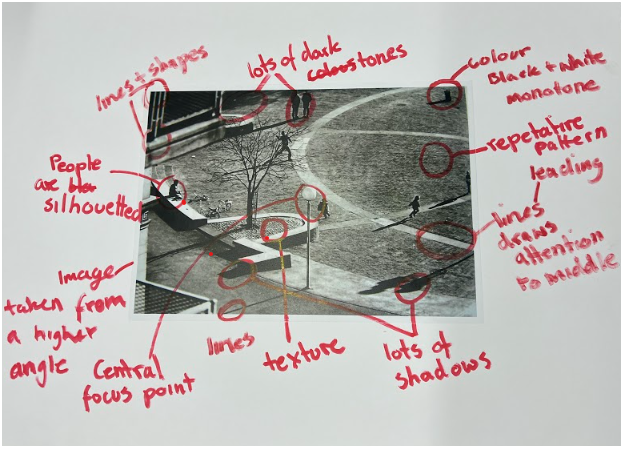Formalism is the identification of a formal set of rules and order that photographers agree are imperative in the making of a photo. These consist of visual/artistic elements, such as lines/shape/form/repetition, and also the elements which are specific to photography as a medium, such as focus/frame/shutter speed. Knowing these key terms and how to use them allows us to equip them to analyse images taken by other artists and use a universal language to discuss them. When a photographer typically identifies a ‘mistake’ in their image it will refer to a misalignment in their ‘following of the rules’ – e.g. out of focus, subject cropped, blur etc.
Looking at Threshold Concept #8 from Photo Pedagogy, we can see that the idea of this set of rules is becoming rather outdated as photography expands its capabilities as a medium.

The above image shows where we have annotated an image based on the ‘photo literacy’ – outlining the shape, texture, depth, tone etc. This gives us as viewers more of a way into understanding the image at a greater depth and grants us the ability to explain it to others through the universal language we have established.

